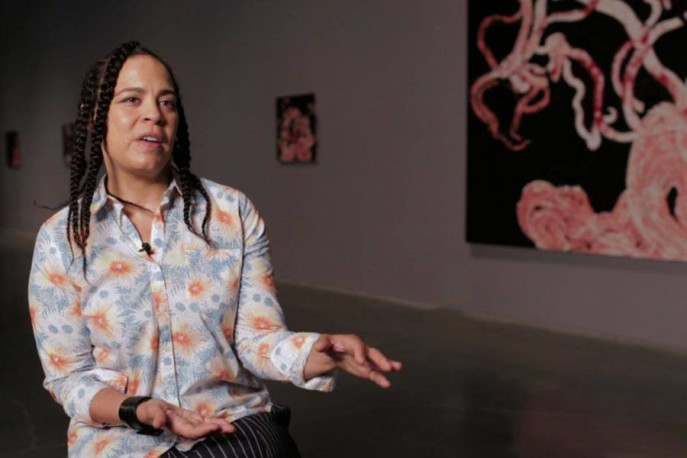
by: Ellen C. Caldwell
for JSTOR Daily
Drawing from a vast archive of cultural references, the artist Ellen Gallagher uses a cartoon-like style to highlight pervasive, exaggerated, and pejorative caricatures of African Americans. She also often complicates her paintings with textual references, such as lines of Emily Dickinson’s poetry. Judith Wilson succinctly argues that Gallagher melds image and text precisely in order to question both that cultural archive and the history of cultural amnesia about it.

Ellen Gallagher, Wiglette from “DeLuxe” 2004-2005
Wilson delves into an analysis of the evolving style and subjects of Gallagher’s works, noting that:
“While she favors simple forms, they often have complex genealogies. In many of her paintings of the past two years, for example, tiny coffee-bean-shaped lozenges mass in various formations. They stem from a cloud of red pigment that appears in a 1992-93 canvas, Untitled (Doll’s Eyes) [found on pg. 336 here]. Reading the red smudge as a lipstick stain eventually led the artist to draw small, disembodied pairs of stylized black lips: the sort of rubbery, banana-shaped lips that were standard elements of the grotesque rendition of African features in 19th- and 20th-century U.S. mass media, advertising, and entertainments, as well as in objects ranging from tea cosies to children’s toys.”
Wilson distinguishes Ellen Gallagher’s work as being uniquely independent: “[p]ost-pop, post-painterly, and post-minimal, Gallagher operates in a space cleared by contemporary feminist, semiotic, black, and cultural studies discourses. Yet her art negotiates these busy intersections in a starkly independent fashion.” She argues that Gallagher’s color palette often purposefully mimics skin tones “as a source of ambivalence and/or alienation in a strictly color-coded society.” She forces viewers to confront and question the pervasive color-codes of American society, while also pointing to a larger ambivalence surrounding those codes…
